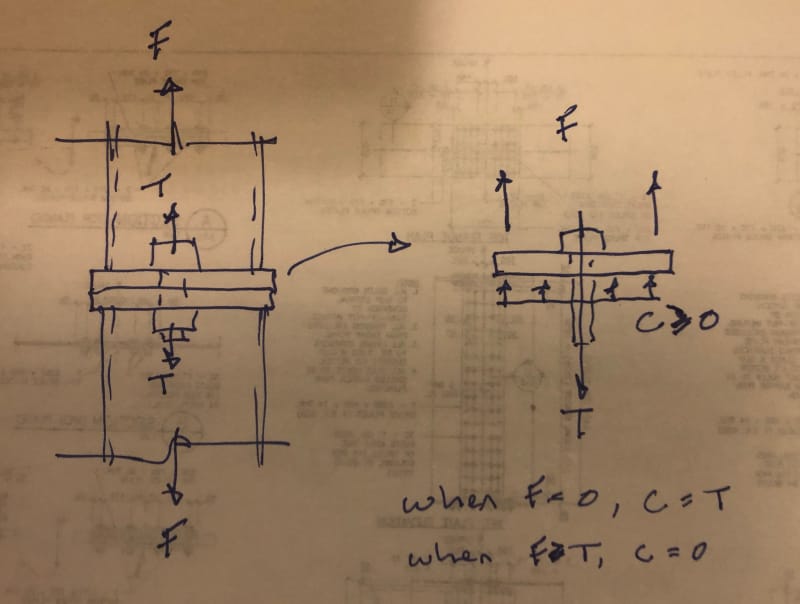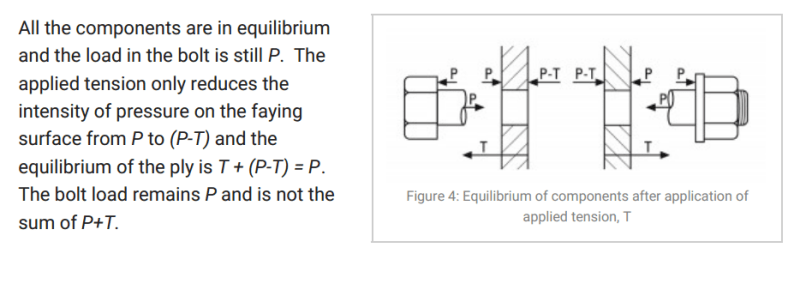thread507-253463
I normally just browse through eng-tips and rarely ever post (this may be my first post!)
Looking through threads, I saw one from 8 years ago that touched on a questionable debate we were having in the office last week. The question was, if you have pretensioned bolts supporting a hanger, and tension load is applied to the hanger, do the pretensioned bolts see more tension? My thoughts were the bolts would see more tension, 2 other engineers said the bolts wouldn't see more tension, and the last engineer was on the fence. By the end of the discussion, everyone agreed that tension applied to an assembly fastened by pretensioned bolts would create more tension in the bolts.
Then I saw in the above thread, slickdeals quoted someone from Modern Steel or AISC saying that the bolts would not see more tension until the assembly begins to separate. I believe this to be incorrect. I agree the assembly won't separate until the tension force on the hanger overcomes the pretension of the bolts; however, you're adding more tension load to the bolts that are already tensioned. Does anyone have any insight to shed on this? Thanks.
I normally just browse through eng-tips and rarely ever post (this may be my first post!)
Looking through threads, I saw one from 8 years ago that touched on a questionable debate we were having in the office last week. The question was, if you have pretensioned bolts supporting a hanger, and tension load is applied to the hanger, do the pretensioned bolts see more tension? My thoughts were the bolts would see more tension, 2 other engineers said the bolts wouldn't see more tension, and the last engineer was on the fence. By the end of the discussion, everyone agreed that tension applied to an assembly fastened by pretensioned bolts would create more tension in the bolts.
Then I saw in the above thread, slickdeals quoted someone from Modern Steel or AISC saying that the bolts would not see more tension until the assembly begins to separate. I believe this to be incorrect. I agree the assembly won't separate until the tension force on the hanger overcomes the pretension of the bolts; however, you're adding more tension load to the bolts that are already tensioned. Does anyone have any insight to shed on this? Thanks.


![[glasses] [glasses] [glasses]](/data/assets/smilies/glasses.gif)
